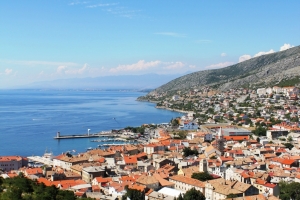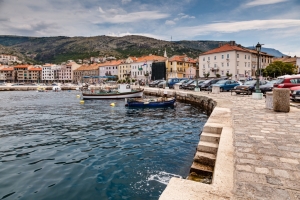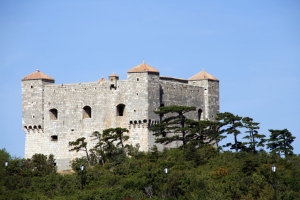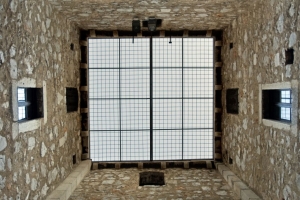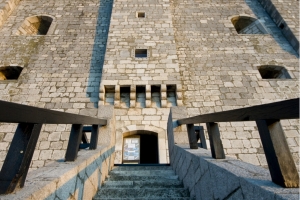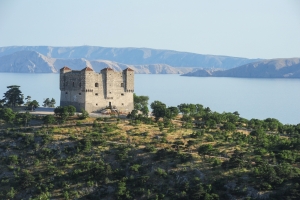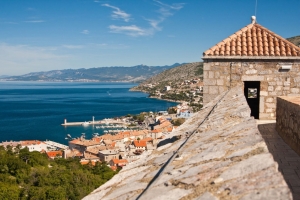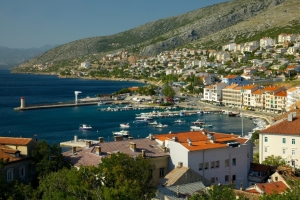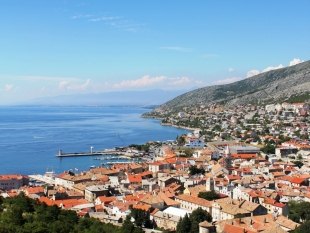


Over 3,000 years old, the coastal town of Senj with 7,100 inhabitants located at the eastern end of the Kvarner bay belongs to the oldest settlements on the Adriatic coast and has had a turbulent history. Senj in the Middle Ages was already seen as a strategically important town on the Adriatic coast and was involved, among other things, in turf wars with the Turks. With the advent of shipping introduced by the Venetians in the 16th century, the residents discovered their "enthusiasm" for the flourishing maritime trade and soon became known as the dreaded pirate town on the Kvarner bay. You can still see the rustic fortresses around the small town as remnants of the brave attitude of the former inhabitants. One of the most famous examples of these massive bulwarks is the story behind the Nehaj Fortress, which was built in 1558. To protect the city, they perched the fortress on a hill. In earlier times they taught their enemies to have fear just through their very robust, imposing fortresses. As if the sight of the Bastion was not sufficient enough, the residents renamed it Nehaj, which translates to "no fear". Today, the fortress is a museum with numerous exhibits, Glagolitic writings and important documents that keep the wild history of Senj alive.
The beginning of the Habsburg monarchy created a more peaceful atmosphere in Senj. They not only drove the pirates out and into other cities, but also introduced new political regulations. As a result, Senj flourished once again to become an important port in the Kvarner bay and developed a thriving economy based around the harbor, the sea and trade. In the late 18th and early 19th century, Senj was not only externally developed, but also renovated in many districts - for example, in the harbor. At the same time, the upswing in tourism had a positive impact on the economy. The first tourists to Senj came primarily from the Austrian and Hungarian aristocratic houses. Later – alongside with the tourist development of the Kvarner bay- tourists came from all over Europe. A particularly popular attraction among tourists is the Carnival of Senj which is celebrated by the residents in winter and summer. During the high season in particular, the tourists are reluctant to leave behind the colorful hustle and bustle in the streets of the city. Around 25,000 visitors travel to Senj for the great carnival parade in the summer.
Culinary Tradition and Versatile Bays
In addition to Senj's colorful festivals and its cultural and historical buildings, it also offers a large variety of gastronomic delights with its numerous restaurants, bars and konobas (taverns), which can be found around the harbor and the waterfront in particular. The gastronomic landscape in Senj is a mixture of international cuisine and the culinary traditions of the Croatian coast, which is manifested mainly in the variety of fish and seafood dishes. One should, therefore, try fish, mussels and crabs on all accounts. Lamb dishes are a traditional dish as well and must not be forgotten as they are prepared under the bell referred to a "Peka". Senj is convincing town to visit not only because of its culture, history and food. The site offers a variety of beautiful beaches that attract many recreation-seeking vacationers to Senj. With seven beaches, Senj offers a lot of variety in this respect. There are also beautiful beaches in the surrounding villages, such as in the Bay of Spasovac in the neighboring town of Sveti Juraj.
Beaches
Location
Why Best of Croatia ?
- Best Price Guaranteed
- No booking fees
- Thousands of satisfied customers
- Numerous objects with direct-booking option
- Intelligent search function with numerous useful filter options
- Extensive travel guide with lots of pictures and videos over 500 pages
- Detailed beach guide with more than 700 beaches







 Best of Croatia
Best of Croatia













